Odin: The Allfather of the Norse Gods
One of the most fascinating figures in Norse mythology is Odin, also known as Woden or Wotan. He is revered as the chief god and ruler of Asgard, the realm of the gods. With his flowing cloak and wide-brimmed hat, Odin is often depicted as a wise and powerful figure, surrounded by ravens and wolves. But who is Odin, and what is his role in Norse mythology? In this article, we will delve into the origins of Odin, explore his realm and power, delve into his wisdom and knowledge, and examine his role as a god of war. We will also discover the mythic journeys of Odin and his ultimate fate in the legendary event known as Ragnarok. Join us as we unravel the mysteries of Odin, the Allfather of the Norse gods.
Contents
- The Origins of Odin
- Odin’s Realm and Power
- The Wisdom and Knowledge of Odin
- Odin’s Role as a God of War
- The Wandering Allfather
- The End of Odin
- Conclusion
-
Frequently Asked Questions
- 1. Who is Odin?
- 2. What is Odin’s role in Norse mythology?
- 3. How did Odin obtain his wisdom?
- 4. What is Asgard?
- 5. How many realms are there in Norse mythology?
- 6. What is the significance of Odin’s ravens?
- 7. What is Valhalla and the role of Valkyries?
- 8. What is Gungnir?
- 9. What are Odin’s mythic journeys?
- 10. What is Ragnarok?
- References
-
Frequently Asked Questions
- FAQs about Odin: The Allfather of the Norse Gods
- 1. How did Odin come into existence?
- 2. What is Odin’s relationship with Ymir?
- 3. Where is Odin’s realm located?
- 4. How many realms are there in Norse mythology?
- 5. What is Odin’s quest for knowledge?
- 6. What is Valhalla, and what is Odin’s connection to it?
- 7. What is Gungnir, and why is it significant to Odin?
- 8. Why is Odin known as the Wandering Allfather?
- 9. What is the legend of Ragnarok, and how does it relate to Odin?
- 10. What is the significance of Odin in Norse mythology?
- References
- Read More
The Origins of Odin
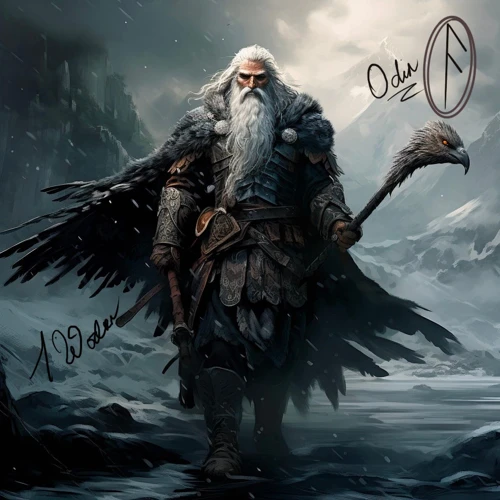
Norse mythology tells us that Odin was not born in the traditional sense but instead emerged as a result of the cosmic forces that shaped the universe. In the Norse creation myth, Odin, along with his two brothers, Vili and Ve, played a crucial role in shaping the world. They were part of a pantheon of gods known as the Aesir, who were descended from the primordial giant Ymir.
According to the Norse creation myth, the world began as a vast, chaotic void called Ginnungagap. From this void, two realms emerged: Muspelheim, a realm of fire, and Niflheim, a realm of ice. The meeting of fire and ice in Ginnungagap gave birth to Ymir, the first being in the cosmos.
Ymir was a giant, and from his body, the world as we know it came into existence. Odin and his brothers Vili and Ve played a significant role in the slaying of the giant Ymir. This act of creation became the foundation of the world, with Ymir’s flesh forming the earth, his blood becoming the seas, and his bones turning into mountains.
Odin and his brothers then fashioned the world into a place fit for the gods. The trio’s actions demonstrated Odin’s role as a powerful and influential figure within the Norse pantheon, entrusted with the responsibility of creating and shaping the cosmos.
The creation myth of Norse mythology provides a fascinating insight into the origins of Odin and his connection to the very fabric of the universe. It reveals his pivotal role in the formation of the world and sets the stage for his subsequent adventures and accomplishments in the realms of gods and mortals. To better understand Odin’s realm and power, let us delve into Asgard, the home of the gods, and the Nine Realms.
1.1 Norse Creation Myth
In the rich tapestry of Norse mythology, the Norse creation myth stands as a cornerstone of understanding the origins of the universe and the gods. According to this myth, in the beginning, there was only Ginnungagap, a vast void of nothingness. However, out of this void, two opposing realms came into existence: Muspelheim, the realm of fire and heat, and Niflheim, the realm of ice and cold.
The meeting of these two realms within Ginnungagap generated intense energies, causing thawing ice and the formation of a giant named Ymir. Ymir, the primordial being, represented chaos and disorder. Yet, from Ymir’s body, creation unfolded. It is said that Ymir’s sweat gave life to the first giants, while his legs brought forth a monstrous offspring.
It was within this primordial realm that the three powerful gods – Odin, Vili, and Ve – emerged. United by their desire to bring order and structure to the cosmos, they eventually confronted Ymir. The epic battle ensued, leading to Ymir’s defeat and subsequent dismemberment. From his dismembered corpse, the gods crafted the various elements of the world.
Ymir’s flesh formed the land, his blood created the seas and lakes, and his bones transformed into mountains and hills. Odin, the Allfather, and his brothers went on to use Ymir’s skull to establish the heavenly realm, known as the sky, which they supported with four dwarves who acted as the cardinal directions.
The Norse creation myth not only provides a captivating explanation for the formation of the universe but also sets the stage for the subsequent tales of gods and mortals in Norse mythology. It highlights the courageous acts of Odin and his brothers, showcasing their role as powerful entities in shaping the world we know today. To delve even deeper into the mythology surrounding Odin’s origins and his realm, let us explore his relationship with Ymir.
1.2 Relationship with Ymir
In Norse mythology, the relationship between Odin and Ymir is both intriguing and complex. As mentioned earlier, Ymir was the primordial giant whose body formed the basis of the world. But the connection between Odin and Ymir goes deeper than mere creation. According to the myth, Odin and his brothers Vili and Ve emerged from the chaos surrounding Ymir. Some interpretations suggest that Ymir may have even been an ancestor of the gods, making Odin and his brothers his direct descendants.
Odin’s relationship with Ymir is not solely one of ancestry, but also one of power. By slaying Ymir, Odin and his brothers demonstrated their dominance and ability to shape the world. Ymir’s body provided the material from which the world was created, signifying that Odin not only possessed the power to craft and mold, but also the authority to take life.
Additionally, Odin’s relationship with Ymir serves as a reminder of the cyclical nature of existence. Ymir, as a primordial being, represents the chaotic forces of the universe that existed before the establishment of order. Odin and his brothers, as gods of order and civilization, triumphed over this chaos to bring stability and structure to the world. This dynamic between chaos and order is a recurring theme in Norse mythology, and Odin’s relationship with Ymir exemplifies this perpetual struggle.
In understanding the relationship between Odin and Ymir, we gain further insight into the complexity and depth of Norse mythology. It highlights the interconnectedness of the gods and their ancestral ties, while also illuminating the constant battle between chaos and order. As we continue to explore Odin’s realm and power, we will delve into Asgard, the home of the gods, and the Nine Realms.
Odin’s Realm and Power
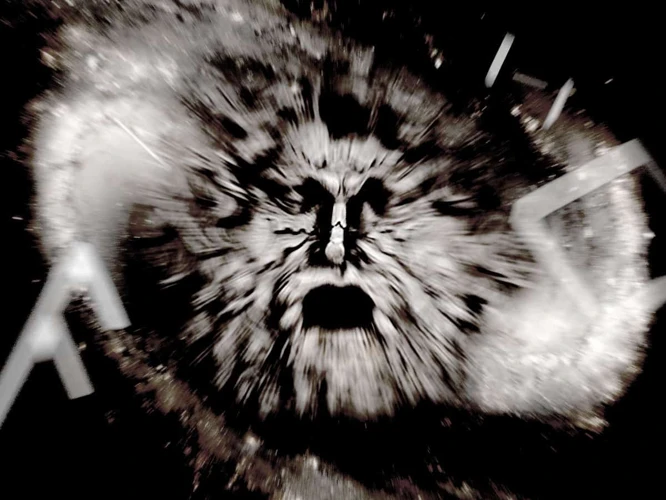
Odin, as the ruler of Asgard, possesses immense power and authority within the realms of Norse mythology. Asgard itself is a majestic and fortified realm, often described as a city in the sky or on top of a mountain. It is connected to the mortal realm, Midgard, by the Rainbow Bridge Bifröst. Within Asgard, Odin resides in a grand hall called Valaskjálf, from where he can observe all the realms.
One key aspect of Odin’s power is his extensive knowledge and wisdom. He is known as the wisest of all the gods and is eager to gain knowledge from every corner of the cosmos. Odin’s thirst for knowledge is exemplified by his relentless pursuit of wisdom, which led him to sacrifice one of his eyes in exchange for a drink from the Well of Wisdom. This sacrifice granted him profound insight into the workings of the universe and made him the ultimate seeker of knowledge.
Another testament to Odin’s power and influence is his ability to traverse the Nine Realms, each with its unique characteristics and inhabitants. These realms include Asgard, Midgard, Jotunheim (the land of the giants), Niflheim (the realm of ice), Muspelheim (the realm of fire), Alfheim (the realm of the light elves), Vanaheim (the home of the Vanir gods), Svartalfheim (the realm of the dark elves), and Helheim (the realm of the dead). Odin’s ability to travel freely between these realms allows him to maintain order and protect the balance between the various realms.
Odin’s control over Asgard is evident through his command of the Valkyries, warrior maidens who serve as his loyal messengers and escort fallen heroes to Valhalla. Valhalla, a majestic hall within Asgard, serves as a gathering place for fallen warriors who are chosen by the Valkyries. These warriors prepare for the final battle of Ragnarok, where they will fight alongside the gods in a cataclysmic clash against the forces of chaos and destruction.
Odin’s realm of Asgard and his immense power showcase his authority and influence over the realms of Norse mythology. His wisdom, ability to traverse the Nine Realms, and control of the Valkyries and Valhalla demonstrate his status as the Allfather and reflect his pivotal role in the Norse pantheon. To gain a deeper understanding of Odin’s wisdom and knowledge, let us explore his quest for knowledge and the sacrifices he made to attain them.
2.1 Asgard: Home of the Gods
Asgard is the majestic realm that serves as the home of the gods in Norse mythology. This celestial realm, also known as “the High Place,” is a place of great beauty and power. Asgard is situated at the top of Yggdrasil, the World Tree, which connects the nine realms of the Norse cosmology.
In Asgard, Odin resides in his glorious hall known as Valaskjalf, which literally translates to “shelf of the slain.” From here, he oversees the affairs of both gods and humans, dispensing wisdom and guidance. Valaskjalf is a place of great splendor, adorned with exquisite decorations and furnishings fit for a king.
Another significant feature of Asgard is the grand hall known as Gladsheim, where the gods gather to hold council and discuss important matters. This hall, decorated with shields on its walls, is a testament to the might and valor of the gods. It is in Gladsheim that Odin’s throne, Hlidskjalf, is located. From this high seat, Odin can survey all of creation, gaining knowledge and insight into the events taking place in the Nine Realms.
Asgard is not only home to the gods but also to other important entities within Norse mythology. The majestic Valkyries, Odin’s fierce and loyal warrior maidens, reside in Asgard. These powerful female figures play a crucial role in selecting brave warriors who die in battle and bringing them to the grand hall of Valhalla. Valhalla, located in Asgard, is where fallen warriors feast and prepare for the final battle of Ragnarok.
Asgard’s significance in Norse mythology extends beyond being a dwelling place for the gods. It represents a realm of order, beauty, and divine power. It is from Asgard that Odin exercises his authority and ensures the balance and stability of the cosmos. To better understand the vastness of Odin’s domain and the interconnectedness of the Norse realms, let’s explore the Nine Realms and their unique characteristics.
2.2 The Nine Realms
The Nine Realms are a central concept in Norse mythology and play a vital role in understanding Odin’s realm and power. These realms are interconnected and form a complex cosmology in which gods, humans, and mythical creatures coexist. Each realm has its own unique characteristics and inhabitants, contributing to the rich tapestry of Norse mythology.
1. Asgard: As the home of the gods, Asgard is the most prominent of the Nine Realms. It is a realm of splendor and grandeur, with towering palaces and majestic halls. Odin, as the ruler of Asgard, resides in his hall called Valaskjalf, where he has a throne called Hlidskjalf. From this perch, Odin can observe the happenings in all the realms.
2. Midgard: Midgard is the realm of humans, situated in the center of the Nine Realms. It is Earth as we know it, populated by mortals who live their lives unaware of the existence of the other realms. Odin has a particular interest in Midgard and its inhabitants. He often interacts with humans, sometimes in disguise, to guide and influence events.
3. Jotunheim: Jotunheim is the realm of the giants, known as Jotnar. These giants are powerful and sometimes menacing beings, often depicted as adversaries of the gods. Odin, being a chief god, has frequently clashed with the Jotnar and sought to maintain the balance of power in the cosmos.
4. Alfheim: Alfheim is the realm of the elves, a race of ethereal beings known for their beauty and magical abilities. Unlike the Jotnar, the elves are generally seen as allies of the gods. Odin often has diplomatic relations with the elves, seeking their aid and wisdom when necessary.
5. Vanaheim: Vanaheim is the realm of the Vanir, another group of gods in Norse mythology. The Vanir are associated with fertility, prosperity, and the forces of nature. Odin, while belonging to the Aesir, has deep ties with the Vanir through various alliances and marriages.
6. Niflheim: Niflheim is a realm of ice and mist, situated in the northern reaches of the cosmos. It is a desolate and inhospitable place, considered the primordial homeland of the frost giants. Odin, along with his brothers, played a crucial role in the creation of Niflheim.
7. Muspelheim: Muspelheim is the realm of fire, opposite to Niflheim’s icy realm. It is a realm of intense heat and flames, inhabited by fire giants and other fiery creatures. Odin, as a powerful and wise god, understands the delicate balance between fire and ice, and he seeks to maintain harmony among the realms.
8. Svartalfheim: Svartalfheim, also known as Nidavellir, is the realm of the dwarves. These skilled craftsmen are renowned for their ability to create powerful weapons and magical artifacts. Odin often interacts with the dwarves, as he seeks their craftsmanship in acquiring legendary weapons.
9. Hel: Hel is the realm of the dead, where those who did not die in battle or were not granted entrance into the gods’ hall reside. It is ruled by the goddess Hel, who is often associated with decay and darkness. Odin, as a god concerned with the fate of mortals, has an interest in the realm of Hel and the souls who inhabit it.
Understanding the Nine Realms provides us with a glimpse into the vastness and interconnectedness of the Norse mythological world. These realms form the backdrop for Odin’s adventures, his pursuit of knowledge, and his role as a guardian and ruler of the cosmos. As we explore Odin’s wisdom and knowledge in the next section, we will see how his understanding of these realms contributes to his power and influence.
The Wisdom and Knowledge of Odin
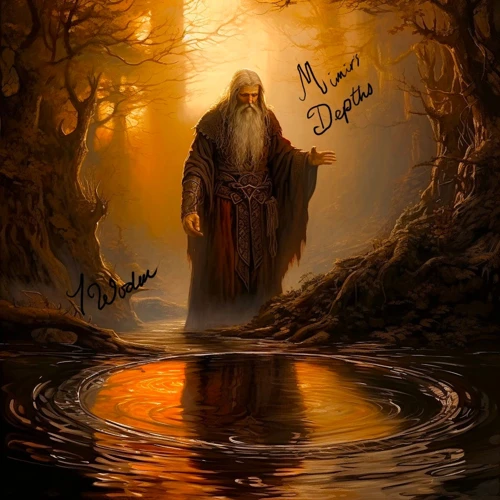
Odin is not only known for his power and wisdom, but also for his insatiable thirst for knowledge. He is considered the wisest of the gods and possesses immense knowledge about the workings of the cosmos. Odin’s relentless pursuit of wisdom is showcased through his nine-day ordeal on the World Tree, Yggdrasil, in search of sacred knowledge. Hanging from the tree, wounded and without food or drink, he sought to gain the secrets of the runes, the ancient Norse alphabet and system of magic. This tremendous sacrifice demonstrated Odin’s unwavering commitment to knowledge and his willingness to endure pain and suffering for its attainment.
As a seeker of wisdom, Odin is associated with various forms of knowledge and magic. He is connected to seidr, a form of Norse magic traditionally practiced by women, which involves divination and the ability to see into the future. Odin’s prowess in seidr is depicted in his encounters with the völvas, powerful seers who provide him with prophecies and insights into important events.
Odin’s association with wisdom is personified in his possession of Huginn and Muninn, his two loyal ravens. Huginn, meaning “thought,” and Muninn, meaning “memory” or “mind,” fly throughout the Nine Realms, observing and gathering information, which they then whisper into Odin’s ears. This enables him to have an extensive network of knowledge, allowing him to make informed decisions and maintain his position as the Allfather.
Odin’s quest for knowledge not only shapes his character, but it also influences the actions and events within Norse mythology. The pursuit of wisdom is a central theme in his stories, often leading him to make bold and sometimes controversial choices. Nonetheless, Odin’s wisdom and knowledge make him an essential figure in Norse mythology, guiding the gods and mortals alike. To explore further, let us delve into Odin’s role as a god of war and his association with the Valkyries and Valhalla.
3.1 The Quest for Knowledge
Odin is not only known for his power and wisdom but also for his insatiable thirst for knowledge. This quest for knowledge drove him to undertake great journeys and make immense sacrifices. The pursuit of knowledge was of utmost importance to Odin, as he believed it would grant him unmatched wisdom and understanding.
One of Odin’s most renowned exploits in his quest for knowledge was his acquisition of the mystical runes. The runes were a system of writing and magical symbols that held immense power and wisdom. In order to obtain this knowledge, Odin hung himself from the branches of the great World Tree, Yggdrasil, for nine days and nights without food or water. This self-sacrifice and ordeal allowed him to tap into the secrets of the runes and become the master of their wisdom. It was through the runes that Odin could gain insight into the future, unravel mysteries, and shape the destiny of gods and mortals alike.
His dedication to knowledge extended beyond the acquisition of the runes. Odin was known to travel the cosmos in search of wisdom and understanding. He would visit other realms, consult with wise beings, and engage in deep contemplation to expand his knowledge. This constant pursuit of knowledge made Odin the wisest of all the gods in Norse mythology.
Understanding the importance of knowledge in Odin’s mythology helps us appreciate his role as the Allfather and as a god of wisdom. It also highlights the significance of knowledge in Norse society, where wisdom was highly valued and sought after. Odin’s quest for knowledge serves as an inspiration for us to continue our own pursuit of knowledge and to never stop seeking wisdom in our own lives.
Next, let us explore the sacrifice Odin made for wisdom, which further exemplifies his commitment to knowledge and understanding.
3.2 The Sacrifice for Wisdom
When it comes to wisdom and knowledge, Odin’s thirst for understanding was insatiable. According to Norse mythology, Odin desired to attain the ultimate wisdom and knowledge that would make him unrivaled among the gods. To achieve this, he made an incredible sacrifice.
Legend has it that Odin hung himself from the branches of Yggdrasil, the world tree, for nine long nights. During this time, he neither ate nor drank, enduring immense suffering and pain. As the winds howled and the world shook, Odin persevered, willing to sacrifice his own well-being for the sake of enlightenment.
It was during these agonizing moments that Odin stumbled upon a revelation. As he gazed into the vast depths beneath him, Odin noticed runes, ancient symbols of power and wisdom, etched into the roots of the world tree. With great effort, he reached out and seized these ancient symbols of knowledge, understanding, and magic.
This sacrificial act granted Odin the wisdom he sought, and he became the master of the runes. The runes became crucial tools that he would use to unravel the mysteries of the cosmos, bestow knowledge upon mortals, and exert his influence as the Allfather of the gods.
The sacrifice for wisdom showcases Odin’s unwavering dedication and his willingness to go to great lengths to obtain the knowledge he desired. His actions not only solidified Odin’s reputation as the god of wisdom and magic but also served as a symbol of the value placed on knowledge in Norse culture. It emphasizes the powerful connection between suffering and enlightenment, echoing the theme of sacrifice that permeates many aspects of Norse mythology.
With his newfound wisdom and a wealth of knowledge, Odin was ready to embark on his role as the master of the gods, wielding his wisdom in matters of war, destiny, and the mortal realm. Speaking of war, let’s explore Odin’s role as a god of war, including the Valkyries and Valhalla.
Odin’s Role as a God of War
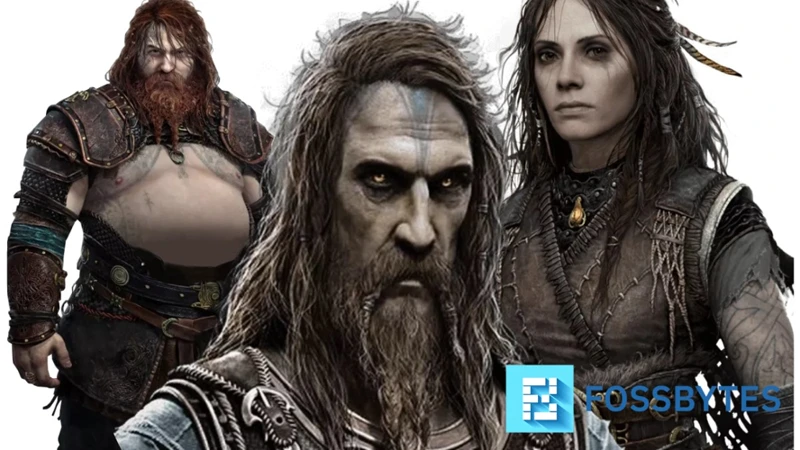
Odin’s role as a god of war is one of the most prominent aspects of his character in Norse mythology. Known as the “Battle-Father,” Odin was associated with martial prowess, victory, and the fate of warriors. He presided over the battlefield, inspiring and guiding warriors in their fights.
One of Odin’s most famous roles in war was his connection to the Valkyries. These mythical figures served as Odin’s handmaidens, choosing which warriors would die in battle and guiding the souls of the fallen to Valhalla, the great hall of the slain. Valhalla was a place where fallen warriors would enjoy endless feasting and battle, preparing for the final battle of Ragnarok.
In addition to the Valkyries, Odin also possessed a powerful weapon named Gungnir. This spear, crafted by the dwarves, was said to never miss its target and always strike with deadly accuracy. With Gungnir in hand, Odin led the charge on numerous occasions, demonstrating his prowess as a warrior and inspiring his followers to victory.
However, Odin’s role as a god of war extended beyond physical combat. He was also revered as the god of both wisdom and magic, using his knowledge and mystical abilities to gain an advantage in battle. Odin was known for his ability to shape-shift into various forms, allowing him to gather information, outwit his opponents, and manipulate the course of events.
In Norse mythology, Odin’s role as a god of war represents his desire for eternal glory and his willingness to make sacrifices for the greater good. His association with warfare highlights his role as a leader and protector of the gods and mortals alike.
To learn more about Odin’s fascinating journey and his ultimate fate, continue reading about his mythic journeys and the legendary event of Ragnarok.
4.1 The Valkyries and Valhalla
In Norse mythology, the Valkyries are a group of powerful female figures who serve Odin in his role as the god of war. These fierce and beautiful beings are tasked with choosing the bravest warriors from the battlefield and carrying them to Valhalla, the great hall of the slain. Valhalla is a majestic hall located in Asgard, specifically reserved for those who have died in combat and earned a place in Odin’s army, known as the Einherjar.
The Valkyries, often depicted as winged maidens, ride through the skies on their magnificent horses, searching for fallen heroes. They select those warriors who have demonstrated exceptional bravery and skill in battle, ensuring that only the most worthy are granted entrance to Valhalla. This process is crucial in building the ranks of Odin’s army for the final battle of Ragnarok.
Valhalla itself is a place of honor and glory. It is described as a grand and majestic hall with golden walls and a roof made of shields. Inside, the fallen warriors feast and partake in endless battles during the day, only to be healed and resurrected each evening in preparation for another day of glorious combat.
For the chosen warriors, Valhalla promises eternal life and the chance to fight alongside Odin in the apocalyptic battle of Ragnarok. This battle, foretold to mark the end of the world, sees the gods and their allies face off against powerful enemies, including giants and monstrous creatures. Odin relies on his army of chosen warriors, the Einherjar, to join him in the fight, as they possess the skill and courage necessary to combat these formidable foes.
The Valkyries and Valhalla represent Odin’s profound connection to warfare and his role as a deity who values heroism and bravery. By gathering the bravest and most skilled warriors to fight by his side, Odin ensures that the realm of Asgard will have the greatest chance of prevailing in the final battle. The Valkyries and Valhalla serve as a testament to Odin’s strategic prowess and his desire to create a formidable force capable of defending the realms from the forces of chaos.
To further explore Odin’s role as a god of war, let us turn our attention to Gungnir, his powerful weapon that aids him in battle.
4.2 Odin’s Weapon: Gungnir
Gungnir, the legendary spear of Odin, is a symbol of his power and authority as the Allfather of the Norse gods. Crafted by the dwarves, master craftsmen known for their exceptional skill, Gungnir is said to be an unbreakable weapon and infallible in its aim.
The spear itself possesses magical properties, making it a formidable weapon in battle. It is said that Gungnir never misses its mark once thrown by Odin, always finding its intended target with deadly precision. This attribute emphasizes Odin’s unmatched skill and prowess as a warrior.
In addition to its accuracy, Gungnir also holds the power to control the ebb and flow of battle. When Odin thrusts his spear into the air, it rallies the troops and fills them with the strength and determination necessary for victory. This ability to influence the outcome of conflicts showcases Odin’s role as a god of war and his leadership qualities.
Beyond its military applications, Gungnir also serves as a symbol of Odin’s divine authority. According to Norse mythology, the spear is inscribed with the sacred runes, which bestow wisdom and knowledge upon the bearer. This connection between Gungnir and Odin’s wisdom highlights his role as a seeker of knowledge and the lengths he is willing to go to acquire it.
The power and significance of Gungnir cannot be understated. As Odin’s weapon, it represents his might, accuracy, and divine guidance. The spear of Gungnir is an essential aspect of Odin’s character and his portrayal in Norse mythology. To fully appreciate Odin’s role as a god of war and the wielder of Gungnir, let us explore the concept of the Valkyries and Valhalla.
The Wandering Allfather
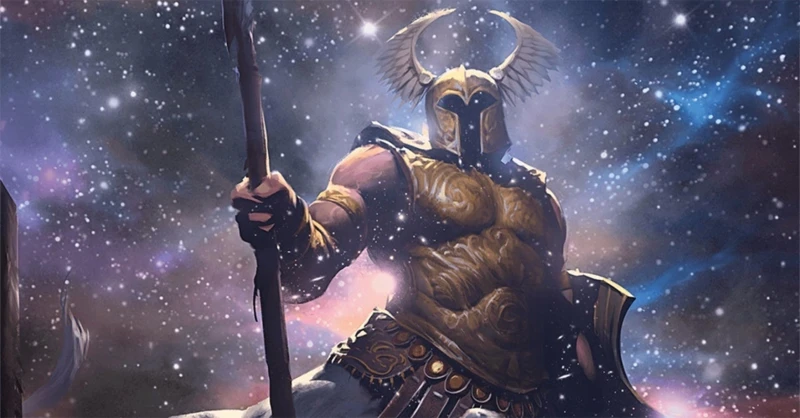
Odin, the Allfather of the Norse gods, is not only known for his wisdom and power but also for his restless and adventurous nature. Despite being the ruler of Asgard and the god of knowledge, war, and magic, Odin often embarks on mythic journeys that take him far beyond his realm. These journeys play a significant role in shaping his character and the world around him. One such journey is his encounter with the giant Mimir, who guarded the Well of Wisdom located in Jotunheim. Recognizing the value of the well’s knowledge, Odin sacrificed one of his eyes to drink from its waters and gain infinite wisdom. This act showcases Odin’s relentless pursuit of knowledge and his willingness to make great sacrifices to achieve it. Another notable journey undertaken by Odin is his transformation into a wanderer. Disguised as an old man with a long beard and a staff, Odin traveled throughout the Nine Realms, disguising his true identity while observing and learning from mortals. This wandering persona allowed him to gain valuable insights into the human experience, which further deepened his understanding of the world. Odin’s mythic journeys ultimately reveal his insatiable thirst for knowledge and his desire to explore beyond the confines of his divine realm. To learn about Odin’s ultimate fate and the legendary event known as Ragnarok, continue reading into the next section.
5.1 The Mythic Journeys
In Norse mythology, Odin embarks on various mythic journeys that shape his character and further establish his wisdom and knowledge. These journeys often involve encounters with different beings and quests for sacred knowledge and power.
One notable mythic journey of Odin is his pursuit of the knowledge of the runes. The runes were ancient symbols that held mystical powers and were believed to reveal the secrets of the cosmos. In order to attain this knowledge, Odin travels to the Well of Urd, located at the roots of Yggdrasil, the world tree. This journey highlights Odin’s relentless pursuit of wisdom and his willingness to seek out esoteric knowledge.
Another significant journey undertaken by Odin is his quest for the mead of poetry. The mead of poetry was a divine substance that bestowed poetic inspiration and eloquence upon those who consumed it. Odin desired this power for himself and traveled to Jotunheim, the realm of the giants, to obtain it. Through cunning and deception, Odin succeeds in acquiring the mead, demonstrating his resourcefulness and strategic thinking.
It is during these mythic journeys that Odin encounters various mythical creatures and entities. He forges alliances, strikes deals, and even engages in battles to achieve his goals. These adventures further solidify Odin’s reputation as a powerful and multifaceted deity, capable of traversing different realms and interacting with a wide range of beings.
The mythic journeys of Odin are not only exciting tales in Norse mythology but also serve to emphasize his insatiable thirst for knowledge and his determination to acquire divine powers. These stories showcase Odin’s bravery, cunning, and ability to outwit his adversaries. They also highlight his role as a divine wanderer, continuously seeking enlightenment and undertaking perilous quests.
To learn more about the mythic journeys of Odin and their significance in Norse mythology, continue reading as we explore the transformation of Odin into a wanderer and the ultimate fate that awaits him in the legendary event known as Ragnarok.
5.2 The Transformation into a Wanderer
After countless adventures and exploits, Odin, the Allfather of the Norse gods, embarked on a transformative journey that led to his ultimate transformation into a wanderer. This transformation was not only a physical change but also symbolized a deeper spiritual and metaphysical transformation for Odin.
One of Odin’s notable journeys was when he sacrificed himself to himself by hanging himself from the world tree, Yggdrasil, for nine days and nine nights. This act was known as the “Hanging of Odin” or “Odin’s Sacrifice.” During this time, Odin deprived himself of food and water, seeking wisdom and knowledge of the runes, the ancient and sacred symbols of the Norse gods.
In his quest for wisdom, Odin’s sacrifice paid off as the runes revealed their secrets to him. This newfound knowledge allowed Odin to become more than just a powerful god; he became a seeker of truth and understanding. The sacrifice and the subsequent wisdom gained through the runes played a pivotal role in Odin’s transformation into a wise and knowledgeable wanderer.
As a wanderer, Odin would often travel the Nine Realms, disguised as an old man with a grey beard, a wide-brimmed hat, a staff, and a cloak. He would venture into the realms of humans, observing their actions, testing their hospitality, and seeking wisdom from the experiences he encountered.
Odin’s transformation into a wanderer allowed him to gain a deeper understanding of the world and its inhabitants. It granted him a unique perspective on the struggles and triumphs of mortals, shaping his role as a god of wisdom and war. Through his travels, Odin would often share his wisdom with those he encountered, bestowing his knowledge upon deserving individuals and guiding them on their own paths of self-discovery.
The transformation into a wanderer showcased Odin’s adaptability and his commitment to seeking knowledge and wisdom from all corners of the universe. It solidified his position as a complex and multifaceted deity, embodying both the fierce and warlike aspects of a warrior god and the wise and enlightened qualities of a sage.
This transformation marks a significant chapter in Odin’s journey, and it serves as a reminder of the ever-evolving nature of the Norse gods and their deep connection to the mortal world. To learn more about the intriguing tales surrounding Odin’s journeys and his ultimate fate, let us explore the legend of Ragnarok in the next section.
The End of Odin
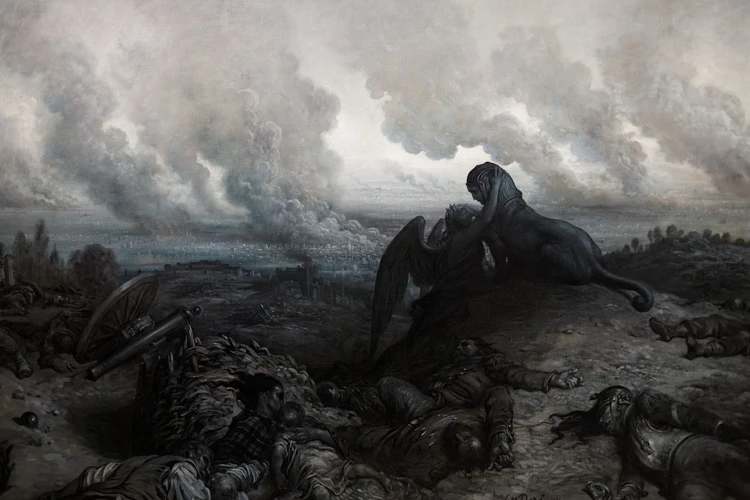
In Norse mythology, the end of Odin, known as the Allfather, is foretold in the apocalyptic event known as Ragnarok. Ragnarok is the catastrophic battle between the gods and the forces of chaos and destruction, ultimately resulting in the end of the world as it exists. Odin, in his all-knowing wisdom, is aware of the impending doom that awaits him and the other gods.
The legend of Ragnarok tells of a time when the cosmic forces are thrown into chaos, with monstrous creatures and giants rising to challenge the gods. Fenrir, the giant wolf, breaks free from his chains, while the sea serpent Jormungandr unleashes its fury upon the world. The skies darken, and the land is engulfed in an eternal winter.
In preparation for the final battle, Odin gathers the fallen warriors known as einherjar in his magnificent hall named Valhalla. The einherjar, who were chosen by the Valkyries, await their destiny to fight alongside Odin in the final battle against the forces of chaos.
During the battle, Odin engages in a fierce duel with the monstrous wolf Fenrir. Despite his wisdom and knowledge, Odin ultimately meets his fate in the form of a ferocious bite from Fenrir, resulting in his death. It is an intense and dramatic moment, showcasing the vulnerability of even the mighty Allfather.
With Odin’s death, the Norse pantheon plunges into darkness. The world suffers immense destruction, and many gods and creatures meet their end. However, from the ashes of Ragnarok, a new world emerges, bringing with it the possibility of rebirth and renewal.
The end of Odin and the subsequent events of Ragnarok signify the cyclical nature of existence in Norse mythology. It is a reminder that even the gods themselves are subject to the forces of time and change. While the end of Odin is a somber moment, it also symbolizes the potential for new beginnings and the continuation of the eternal cycle of life and death.
As we conclude the exploration of Odin’s journey and his ultimate fate, we can appreciate the intricate and profound mythology that surrounds this iconic figure. Odin’s significance in Norse mythology goes far beyond his role as the ruler of the gods. His character embodies wisdom, knowledge, sacrifice, and the relentless pursuit of power and understanding. The Allfather has left an indelible mark on mythology and continues to captivate our imaginations to this day.
6.1 The Legend of Ragnarok
In Norse mythology, the Legend of Ragnarok is a tale of apocalyptic destruction and renewal. Ragnarok, which translates to “Fate of the Gods,” is believed to be the final cosmic battle that brings about the end of the world. This cataclysmic event is foretold to occur when the great enemies of the gods, led by the monstrous wolf Fenrir and the fire giant Surtr, rise against them. The forces of chaos and destruction, including giants, monsters, and the dead, clash with the gods and their mortal allies in a devastating war.
During Ragnarok, Odin’s own son, the mischievous Loki, plays a treacherous role, aligning himself with the enemies of the gods. This betrayal further adds to the sense of turmoil and suspense. The battle itself is an epic struggle that tests the strength and bravery of all involved, including Odin, who fights alongside his fellow gods to defend Asgard and preserve the order of the cosmos.
The Legend of Ragnarok has captured the imaginations of countless individuals as a tale of grandeur and sacrifice. It is a story that explores themes of fate, heroism, and the cyclical nature of existence. Despite the seemingly bleak outcome, there is a glimmer of hope in the aftermath of Ragnarok. The myth also predicts a new beginning, in which a new generation of gods will rise and a new world will be born from the ashes of the old.
The Legend of Ragnarok serves as a reminder of the impermanence of all things, even for the gods themselves. It underscores the importance of embracing change, adapting to challenges, and finding hope in the face of adversity. As we delve further into the rich tapestry of Norse mythology, we gain a deeper understanding of Odin’s role as the Allfather and the significance of his ultimate fate in the impending Ragnarok.
Continue to read our article to discover the amazing world of Odin and the intricate mythology of the Norse gods.
Conclusion
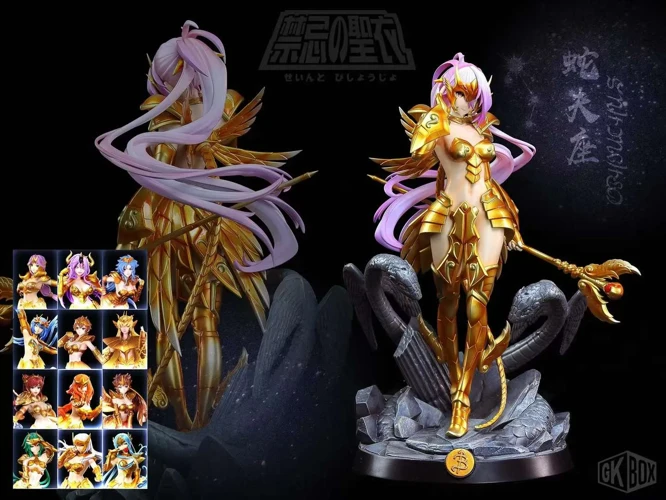
In conclusion, the story of Odin, the Allfather of the Norse gods, reveals a complex and multifaceted character. From his origins as a result of the cosmic forces that shaped the universe, to his role as a creator and ruler of Asgard, Odin embodies wisdom, knowledge, and power. His quest for knowledge and sacrifice for wisdom showcase his relentless pursuit of understanding the world and the mysteries it holds. Additionally, Odin’s role as a god of war, with the Valkyries and Valhalla under his command, highlights his connection to bravery, battle, and the honorable death of warriors. The mythic journeys of Odin and his eventual transformation into a wanderer add depth to his character, revealing a figure who is not bound by the confines of one realm or role. Lastly, the legend of Ragnarok symbolizes the cycle of destruction and rebirth, in which Odin plays a significant role as a participant in the ultimate battle. Overall, Odin’s story is one of power, wisdom, sacrifice, and the ever-changing nature of existence in Norse mythology. To delve deeper into the significance of Odin and his place in mythology and culture, explore other fascinating topics such as the importance of the modern constellation system/history-importance-modern-constellation-system/.
Frequently Asked Questions

1. Who is Odin?
Odin is the chief god and ruler of Asgard in Norse mythology. He is known as the Allfather and is revered for his wisdom, knowledge, and mastery of war.
2. What is Odin’s role in Norse mythology?
Odin plays a multifaceted role in Norse mythology. He is not only the chief god but also the god of war, wisdom, poetry, and magic. Odin is also closely associated with death, being responsible for gathering fallen warriors in battle.
3. How did Odin obtain his wisdom?
Odin obtained his wisdom through his relentless pursuit of knowledge. In one famous tale, Odin sacrificed one of his eyes in exchange for a drink from the Well of Wisdom, gaining immense insight and knowledge.
4. What is Asgard?
Asgard is the realm of the gods in Norse mythology. It is a majestic and splendid realm, home to the Aesir gods, including Odin. Asgard is said to be connected to the mortal realm, Midgard, by Bifrost, a rainbow bridge.
5. How many realms are there in Norse mythology?
In Norse mythology, there are nine realms. These include Asgard, Midgard (the mortal realm), Niflheim (the realm of ice), Muspelheim (the realm of fire), Alfheim (the realm of the elves), and others.
6. What is the significance of Odin’s ravens?
Odin has two ravens named Huginn and Muninn, meaning thought and memory. They fly throughout the realms and bring back information to Odin, serving as his eyes and ears and providing him with valuable knowledge.
7. What is Valhalla and the role of Valkyries?
Valhalla is a grand hall in Asgard where fallen warriors are brought by Valkyries, Odin’s handmaidens. The Valkyries choose heroic warriors and bring them to Valhalla, where they will prepare for the ultimate battle of Ragnarok.
8. What is Gungnir?
Gungnir is Odin’s legendary spear, crafted by the dwarves. It is known for its unerring accuracy and always hits its intended target. Odin wields Gungnir in battle and is an emblem of his power and authority.
9. What are Odin’s mythic journeys?
Odin embarks on various mythic journeys throughout Norse mythology. One famous journey is when he hung himself from the World Tree, Yggdrasil, for nine days and nights to obtain knowledge of the runes, a powerful system of symbols and divination.
10. What is Ragnarok?
Ragnarok is a cataclysmic event in Norse mythology, often referred to as “the end of the world.” It is a final battle between the gods and giants, resulting in the destruction and rebirth of the cosmos.
References
- Why is Odin called the Allfather and not Ymir : r/Norse
- Odin | Myth & History
- Odin Allfather: Norse Deity, Wisdom, War, and Poetry
Frequently Asked Questions

FAQs about Odin: The Allfather of the Norse Gods
Below are some frequently asked questions about Odin, the Allfather of the Norse Gods, along with their short answers:
1. How did Odin come into existence?
Odin, like all the Norse gods, came into existence through the Norse creation myth. He emerged from the primordial void along with his brothers, Vili and Ve, after the giant Ymir was slain by the god and his brothers.
2. What is Odin’s relationship with Ymir?
Ymir, the giant, played a significant role in Norse mythology. Odin, along with his brothers, used Ymir’s body to create the world. From Ymir’s flesh, they formed the land; from his blood, they created the oceans; and from his bones, they established the mountains.
3. Where is Odin’s realm located?
Odin’s realm is called Asgard, and it is located high above the nine realms in Norse mythology. Asgard is a realm where the gods reside and where Odin rules as the Allfather.
4. How many realms are there in Norse mythology?
According to Norse mythology, there are nine realms in total. These realms include Asgard, Midgard (the realm of humans), Jotunheim (the realm of giants), and others, each with its unique qualities and inhabitants.
5. What is Odin’s quest for knowledge?
Odin is known for his insatiable thirst for knowledge. He constantly seeks wisdom by sacrificing himself, hanging from the World Tree, Yggdrasil, for nine days and nights, and paying the price in the form of losing an eye in exchange for immense wisdom.
6. What is Valhalla, and what is Odin’s connection to it?
Valhalla is the great hall where Odin welcomes the brave warriors who died in combat. These warriors are chosen by Odin himself to join the mighty Valkyries in preparation for the final battle of Ragnarok.
7. What is Gungnir, and why is it significant to Odin?
Gungnir is Odin’s powerful spear, crafted by the dwarves. It is a weapon of immense power and accuracy, imbued with Odin’s magic. Gungnir never misses its mark and symbolizes Odin’s authority as the god of war and leader of the gods.
8. Why is Odin known as the Wandering Allfather?
Odin is associated with wandering and travels throughout the Nine Realms and beyond. He often disguises himself as a wanderer to gain knowledge and seek wisdom from different sources, or to test the hospitality of mortals.
9. What is the legend of Ragnarok, and how does it relate to Odin?
Ragnarok is the cataclysmic final battle in Norse mythology. It signifies the end of the world as we know it. During Ragnarok, many gods, including Odin, will face their ultimate demise, leading to the cycle of rebirth and the beginning of a new era.
10. What is the significance of Odin in Norse mythology?
Odin holds a central position in Norse mythology as the Allfather and ruler of the gods. He embodies wisdom, knowledge, war, death, and magic. His actions and choices shape the fate of the gods and the worlds, making him a crucial figure in Norse mythology.







